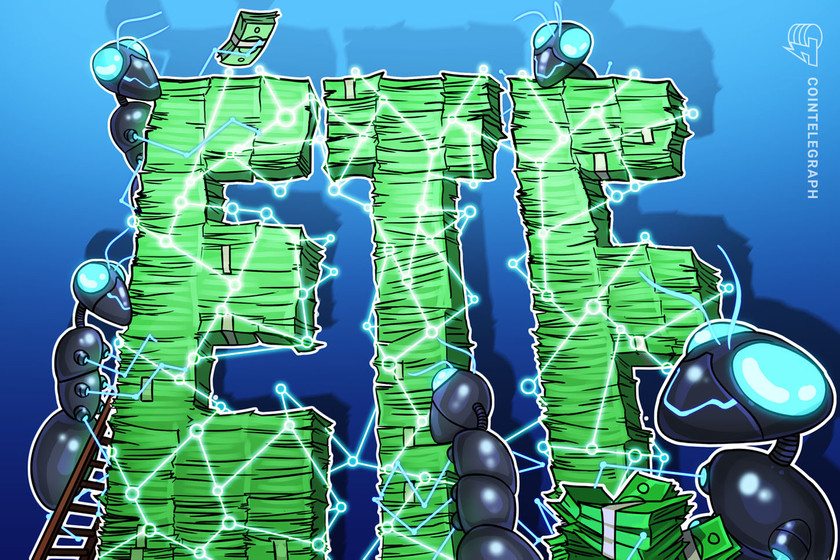Finding the sweet spot: Traditional financial institutions ready for DeFi
Cryptocurrencies have been vying for the attention of large institutional investors for years and they’re finally getting the attention they wanted. Blockchain networks and their consensus mechanisms never made sense to the traditional investor, but decentralized finance, or DeFi? That’s something everyone’s looking to get behind.
Traditional investors are more used to concepts like stocks and real estate, focusing on aspects like revenue, monthly active users and cash flows, making DeFi a far better entry point into blockchain for them. Over the last year, DeFi projects have been popping up across the globe, drawing billions of dollars into the niche industry.
Fidelity Digital Assets recently reported that 80% of surveyed institutions are interested in digital assets, with 36% of them claiming to have already invested in the asset class. Further, according to Evertas, a cryptocurrency insurance firm, 90% of institutional investors in the U.S. and U.K. plan on increasing their crypto holdings soon.
Nick Ovchinnik, chief business development officer of 1inch Network, told Cointelegraph, “Inflow of institutional funds will have a long-lasting positive impact on the market.” He said that the presence of reputable entities should boost the market’s stability for retail investors and the much-awaited adoption of this new asset class, stating:
“Those investors are pretty much risk-averse and have a long-term investment horizon. Therefore, the most efficient assets on the market are the ones that will benefit the most due to their dominant position.”
Just recently, the Aave DeFi protocol announced a new platform exclusively for institutional investors. There may be billions locked in DeFi, but it’s a modest sum compared to the trillions of dollars spent each day across the traditional financial system. As the technology available to investors scales to the size of the industry’s growth potential, all eyes are on DeFi and how institutions will mold it.
Institutional impact
Over the past few months, Ethereum’s total value locked (TVL) into DeFi platforms has been tracking close to $60 billion, pushing it into the limelight and forcing the financial services space to address its advantages. Using programmable smart contracts, DeFi can perform the same functions as traditional centralized systems while reducing economic drag, minimizing overhead costs and making the system more efficient.
It incentivizes decentralized participants through yield farming, and while there are enough reasons to remain skeptical, especially considering how much unaudited code runs throughout the DeFi ecosystem, participants are well compensated for that level of risk. As the digital assets’ market value has grown, so has the price of these associated yield tokens, driving double-digit returns to stakeholders.
The more tech-savvy among them have improved their capabilities to review contracts more rapidly and measure for market anomalies through automation. Across the board, new money is entering the DeFi space globally, with institutional funds, trading firms and centralized finance platforms contributing significantly to the space’s liquidity.
However, though DeFi and distributed ledger technology (DLT) may be advancing more than ever before, the regulatory side of things is still far behind where it needs to be. There’s a lot of risk in DeFi, and a platform copying code from other vetted platforms with minor tweaks doesn’t guarantee safety from software risk. In the coming years, regulators have a huge task ahead of them, ensuring the dangers that blockchain poses don’t outshine its advantages.
Daniel Santos, the founder of DeFi.Finance — a platform that offers DeFi products tailored to large institutions — told Cointelegraph, “Only a fraction of institutional investors have policies allowing them to invest in non-regulated products, so they will be primarily looking for regulated DeFi products.” The team is also collaborating with partners in the traditional financial services space, including governments. Santos added:
“We are pioneering a whole new world of financial services that will be orders of magnitude larger than today’s DeFi industry.”
Many decentralized finance platforms have reported institutional wallets dominating their capital pools, including Celsius, 0XB1, Three Arrows and Alameda. The institutions are definitely coming for DeFi, but as a space that thrives on decentralization, not everyone is sure how their arrival will affect the industry.
That said, blockchain has never succumbed to bureaucracy because it was designed to fend against it. Its ethos of permissionless, trustless inclusivity makes it simple for anyone to participate in its credit and insurance markets, provide liquidity and even farm yields. According to Michael Bazzi, CEO of DeFi platform Onomy, synthetic assets like stablecoins could even accelerate forex and stock markets’ shift to on-chain trading frameworks.
Related: Illusion or reality? Crypto demand either faltering or poised to charge
“DeFi does not discriminate,” Bazzi told Cointelegraph, stating, “While powerful infrastructure to onboard CeFi into DeFi is a reality being assembled at this very moment, the technology will be ready by the time institutions are ripe to fully embrace the DeFi paradigm.”
Others seem to share the sentiment that institutions will not significantly impact projects’ decentralization, including the head of growth at Balancer Labs, Jeremy Musighi. “I think the DeFi community generally recognizes the value of institutional capital. I’d say the overall stance of the DeFi space is welcoming,” he told Cointelegraph, adding:
“I think the main bottleneck, other than compliance concerns, is the learning curve that comes with a technological breakthrough. I’ve done a lot of consulting for financial institutions and many of them are still wrapping their heads around the basics of DeFi.”
However, he also stated that it didn’t matter how welcoming the space was because DeFi platforms ran on permissionless protocols that inherently invite participation from anyone without bias. With stronger risk controls, improved diversification and better smart contract code review processes, institutions are gearing up to invest.
Corporate concerns
DeFi has grown beyond most people’s expectations, but a lot of its underlying infrastructure relies on the Ethereum network. With high gas fees and network congestion plaguing the system, DeFi platforms and users are both apparently looking to jump ship. However, these issues are little more than inconveniences for institutional traders.
Ethereum may charge up to $200 in transaction fees, but when you’re trading on the scale of hundreds of thousands of dollars, these charges are far less invasive. Further, fees do not scale with the transaction amount, meaning a multi-million dollar transaction can incur the same fees as a $100 trade.
Related: On the fence: If this is a crypto bear market, how long can it last?
Though there are efforts to draw the DeFi space away from Ethereum, institutions will likely hone their focus on this platform. However, competing networks like Polkadot, Cardano and Solana have all seen significant investments from institutional players, but whether they’re betting against Ethereum or just hedging their existing holdings is yet to be revealed.
Returns in decentralized finance can be extremely lucrative but are also completely unpredictable. Gains vary widely across the space, and while the latest platforms often generate the highest returns, they also pose the greatest risk of total loss. Institutions approach investment size and price risk in very different ways from retail traders. Still, as confidence in the space grows, risks should decrease and institutional positions in digital assets should begin to grow.









